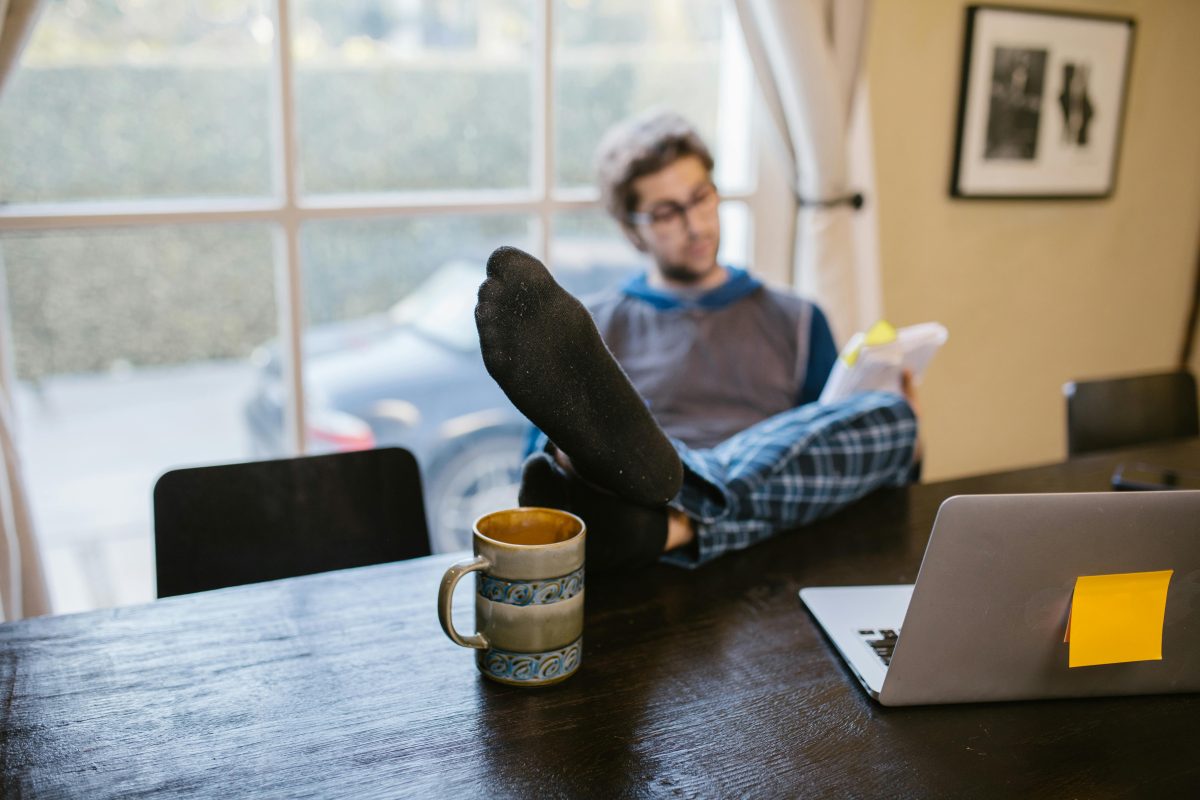Understanding How Social Comparison Affects Adolescent Self-Esteem

In the digital age, social comparison—a process where people assess their own value by comparing themselves to others—has flourished. Teens are inundated with images of other people’s lives on social media, which frequently prompts negative comparisons. Teens’ feeling of value and worth are crucial to their development as adolescents and are a major factor in their self-esteem. It’s a delicate structure that is essential to their social and emotional development. Teen self-esteem and social comparison have a complicated relationship. The constant peer comparison that teenagers face on digital platforms during these critical years can warp their perception of themselves and frequently lower their self-esteem. This dynamic emphasizes the need for knowledge and techniques to lessen the negative effects of social comparison in order to help teenagers form strong, resilient identities.
Social Comparison: The Psychology Behind It

The Social Comparison Theory developed by Leon Festinger is fundamental to comprehending this dynamic. It suggests that we are inherently motivated to assess ourselves, frequently in comparison to others. This comparison can be downward, where we measure ourselves against people we believe to be in poorer shape, or upward, when we look at those we believe to be in better shape. Every kind has unique psychological effects that affect our mental health and sense of self.
- This natural inclination has been amplified by social media, particularly in teenagers.
- Sites like Instagram and Snapchat turn into places where people compare things all the time.
- Adolescents frequently find themselves comparing their value to these polished, frequently exaggerated digital personalities in their search for identification and a sense of belonging.
There are significant psychological effects. Continuous comparison can cause anxiety, lower one’s sense of self, and even result in depression. It’s a self-feeding cycle where the feeling of inadequacy may get worse with every social media scroll. In order to assist teenagers in navigating this environment, it is imperative to identify the warning signals of unhealthy comparison and to promote candid discussion regarding the selective nature of social media content. Teens can develop a more resilient and positive self-image if we provide an environment where real-life accomplishments and personal development are valued more highly than likes and followers.
Social Media: A Comparative Catalyst

Teen life is greatly influenced by social media platforms in this new era of the digital age. Teenagers are frequently exposed to the carefully selected highlights of their peers’ life on social media platforms like Instagram, Snapchat, and TikTok, which have become into arenas for comparison. Because of this selective sharing, people’s ideas of reality become distorted and the ordinary parts of life are overlooked in favor of a carefully manicured perfection. Because likes, follows, and comments on these platforms provide a quantitative indicator of one’s social standing, they have a significant impact on the self-esteem of teenagers.
- Teens must navigate a world where their worth sometimes appears to depend on how active they are on social media.
- This digital age creates a culture of comparison in which an individual’s online success can eclipse their offline accomplishments.
- Social media content is carefully chosen, giving the impression of perfection that is out of reach for most people.
It’s critical to acknowledge the influence of these sites. Teens can better comprehend the distorted nature of these digital personas by being encouraged to have candid conversations about the facts that underlie the selective sharing on social media. We can help kids form a healthier relationship with social media by creating an atmosphere where people’s worth is determined by their own development and accomplishments outside of the digital sphere. Resources such as the eSafety Commissioner’s handbook for young people, provide insightful advice and helpful tips for interacting securely and constructively in online environments.
An extra degree of pressure is added by the quantification of social standing on these platforms through likes, follows, and comments. Teenagers frequently misinterpret this concrete indicator of acceptance and popularity as a representation of their actual values. This feature of social media might make people who don’t measure up to their friends online feel even more alone and low on self-worth. In order to help teenagers develop resilience against the temptations of digital comparison, it is crucial to promote a conversation about the significance of self-worth that goes beyond social media measurements.
In summary, social media platforms have a big influence on how teenagers view themselves by comparing them to others. Through comprehension of the underlying principles and the promotion of candid conversations regarding the realities of social media, we may assist teenagers in navigating this environment with a more positive view of their identity and worth.
Getting Around the Digital World: Tips for Parents and Teens

It’s critical to establish a positive relationship with social media. Intentional use and boundary-setting can greatly reduce the negative impacts of digital comparison. The amount of time spent online matters not as much as its quality. A step in the direction of a better digital environment is to encourage teenagers to interact with content that enhances rather than devalues their sense of self.
It’s critical to encourage parents and teenagers to communicate openly. It’s about establishing a secure environment where fear or thoughts of inadequacy can be freely shared. In addition to providing perspective on the carefully selected quality of social media information, parents are essential in helping their adolescent children feel valued for their achievements in the real world.
It is essential to promote interactions and activities in real life. These encounters provide a counterpoint to the digital environment by fostering resilience and self-worth. Real-world activities, such as athletics, the arts, or volunteer work, offer a sense of achievement and camaraderie that social media cannot match.
Critical media literacy is an effective instrument. A discerning mentality is fostered by teaching teenagers to critically evaluate and question the content they encounter on social media. It’s important to comprehend the purpose of the content and acknowledge how frequently online identities are created. This critical approach lessens the impact of unfavorable comparisons by assisting kids in navigating social media with a more grounded viewpoint.
In summary, negotiating the digital terrain necessitates a diverse strategy. We can help kids have a positive relationship with social media by establishing limits, encouraging open communication, promoting in-person contacts, and teaching critical media literacy. This well-rounded strategy not only lessens the detrimental effects of social comparison but also gives teenagers the tools they need to develop a healthy online and offline self-image.
Professional Guidance and Resolutions

Interviews with psychologists provide insight into the psychological foundations and long-term impacts of social comparison. These professionals explain how teens’ self-esteem can be severely damaged by continual comparison, particularly on digital platforms. The findings highlight the urgent need for methods that support teenagers in developing a more positive self-image independent of the shifting norms of social media.
- In this environment, educational initiatives stand out as a ray of hope. Customized curricula and programs are designed to increase adolescent self-esteem by encouraging a sense of accomplishment and community that isn’t dependent on internet approval.
- Policy plays a critical role in reducing the negative effects of social comparison. Possible social media usage and content laws might provide the much-needed framework to shield teenagers from the harmful consequences of digital comparison.
When combined, these tactics offer a thorough method for resolving the problems caused by social comparison. Through the integration of expert perspectives, educational programs, and deliberate regulatory actions, we can assist teenagers in adeptly and resiliently navigating the digital landscape. The objective is to enable teenagers to develop a strong and positive sense of self-worth in addition to lessening the detrimental effects of social comparison.
In Conclusion
In the digital age, social comparison influences teenagers’ self-esteem. It’s a resilient trip filled with obstacles. Teens can avoid the hazards of social media by being aware of them and taking deliberate action, which will help them develop a positive self-image. In order to develop a good sense of self, this essay emphasizes the value of communication, making connections in the real world, and critical media literacy. Let’s give our children the tools they need to recognize their own worth and move on with assurance.
Understanding the Impact of Social Comparison on Teen Self-esteem FAQs
Yes, social comparison can have a positive effect on teen self-esteem when it motivates them to improve themselves or feel a sense of belonging by identifying similarities with others. It can inspire teens to set goals and work towards them, boosting their confidence and self-worth when they achieve these objectives. However, this positive impact depends on the mindset of the individual and whether the comparison is with realistic, attainable standards.
Teens can be taught to engage in healthier social comparison by being educated on the selective nature of social media, learning to focus on personal growth rather than competition, and practicing gratitude for their own unique qualities and life circumstances. Encouraging self-compassion and emphasizing the importance of personal effort and progress over external validation can help shift the focus from comparison to self-improvement. Additionally, teaching critical thinking skills can help teens analyze and question the realism of the comparisons they make.
Gender differences can affect social comparison and self-esteem in teens, with research suggesting that girls may be more prone to social comparison, particularly in relation to physical appearance, which can lead to higher rates of body dissatisfaction and lower self-esteem. Boys, on the other hand, might compare themselves more in terms of athletic ability, popularity, or academic success, which can also impact their self-esteem but in different ways. These differences highlight the need for gender-sensitive approaches in addressing the impacts of social comparison on self-esteem.
Social media platforms contribute to social comparison among teens by providing a constant stream of content for comparison, such as images and updates that highlight success, beauty, and perceived happiness. This exposure can make teens feel inadequate when their own lives or appearances don’t match up to those they see online. The curated nature of social media content means teens are comparing their everyday lives to idealized representations, exacerbating feelings of low self-esteem.
Upward social comparison occurs when teens compare themselves to others they perceive as better off or more successful, which can lead to feelings of envy and lower self-esteem. “Downward” social comparison happens when they compare themselves to those they perceive as worse off, which can temporarily boost self-esteem but may also foster negative attitudes like superiority or complacency. Both types of comparisons can influence a teen’s self-esteem and overall well-being, depending on how they interpret and react to these comparisons.
The long-term effects of social comparison on teen self-esteem can include chronic dissatisfaction, low self-confidence, and an increased risk of mental health issues such as depression and anxiety. Constant comparison can set unrealistic standards for success and beauty, leading to persistent feelings of inadequacy. Over time, this can erode a teen’s self-esteem, making it difficult for them to appreciate their own value and achievements.
Social comparison is the process of evaluating oneself against others, which can significantly impact teen self-esteem by either lowering or boosting it. Teens often compare themselves to peers and celebrities on social media, leading to feelings of inadequacy or low self-worth when they perceive themselves as less successful or attractive. This can result in a distorted view of reality, as these comparisons are often based on selectively presented highlights of others’ lives.
Celebrity culture can exacerbate the impact of social comparison on teen self-esteem by setting highly unrealistic standards of success, beauty, and lifestyle. Teens may feel pressured to emulate the lavish lifestyles, flawless appearances, and success stories portrayed by celebrities, leading to feelings of inadequacy and low self-worth. This can distort their understanding of success and beauty, making it difficult for them to appreciate their own achievements and qualities.
Parents play a crucial role in mitigating the negative effects of social comparison by fostering open communication, encouraging critical thinking about social media, and promoting healthy self-esteem. They can help their teens understand the curated nature of social media content and encourage them to focus on their own strengths and achievements. Additionally, parents can model positive social media habits and self-acceptance, further supporting their teen’s self-esteem.
Schools can reduce the negative impact of social comparison by promoting an inclusive environment that values diversity and individual achievements, implementing programs that teach media literacy and critical thinking skills, and providing support services for students struggling with self-esteem issues. Encouraging extracurricular activities that focus on personal growth and teamwork can help shift the focus from comparison to collaboration and self-improvement. Additionally, integrating discussions about the effects of social media and social comparison into the curriculum can equip students with the tools they need to navigate these challenges healthily.

